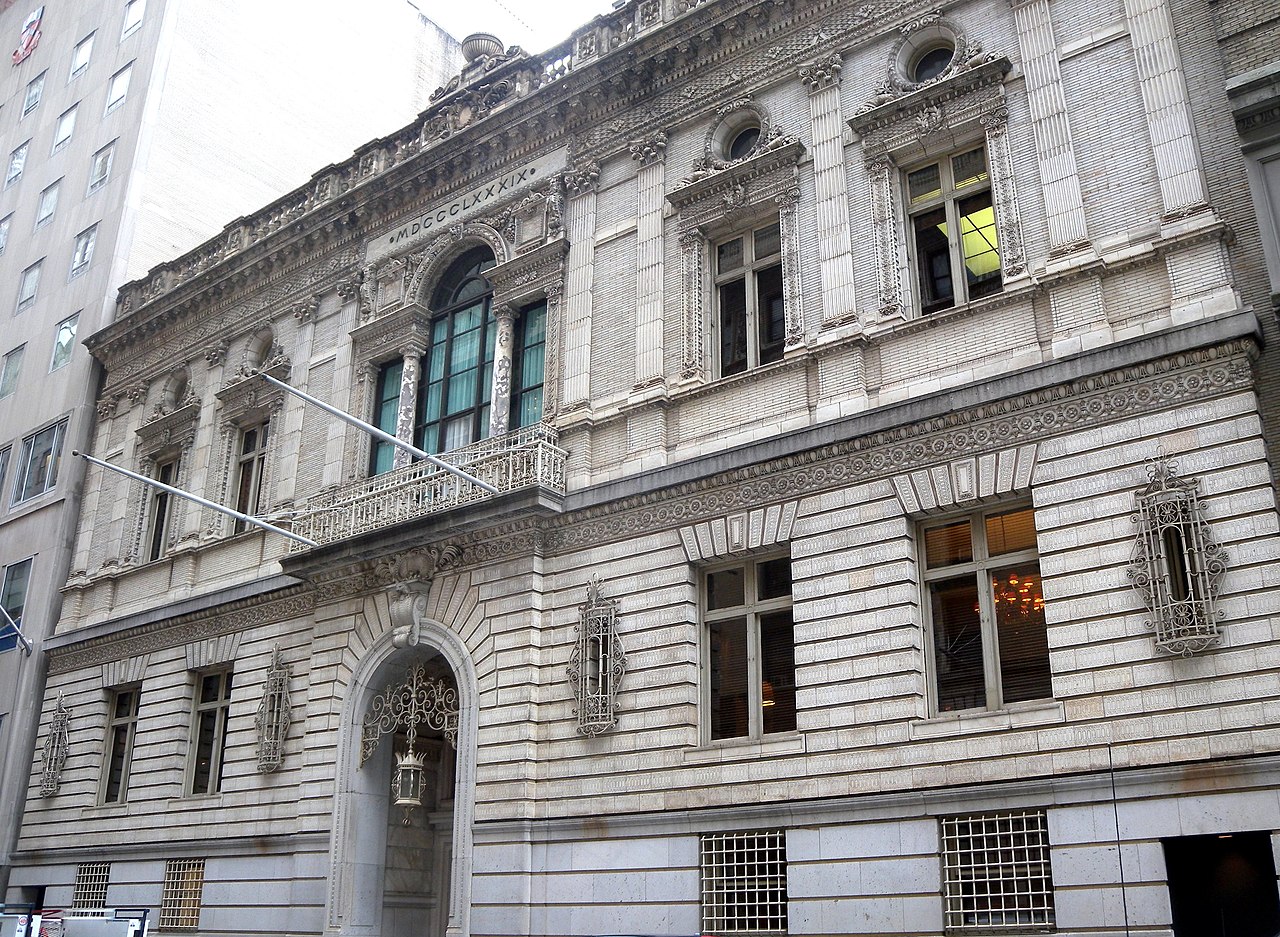On Thursday, April 29 from 6:00 to 7:15 PM (ET), fans of McKim, Mead & White and its architecture are in for a rare treat. That’s when Landmark West! will host a Zoom lecture with N.Y.U. Prof. Mosette Broderick, architectural historian and author of “Triumvirate: McKim, Mead & White (Alfred A. Knopf, 2010). Her topic of choice: the early years of “The Real Architects of New York City.” It’s a fundraiser by Landmarks West! to protect historic districts on the Upper West Side. A+A interviewed Prof. Broderick by phone yesterday for two posts:
By banding together in 1879, Charles McKim, William Mead, and Stanford White began to create architecture superior to any of their peers.
They had help. White would hand off his initial parti to Joe Wells, who would turn it into sections and elevations. Sidney Stratton provided the social connections that would lead to wealthy clients and increasingly sophisticated projects.
“There was good work, along with good budgets and good publicity,” says Mosette Broderick. “And more people were coming into work with them – Carrère and Hastings came through, for example.”
The firm elevated American architecture to a level equal to that found across the Atlantic. “They were bringing Europe here – not from book plates, but from studying abroad,” she says. “It was parity with what s going on in Europe.”
White would sketch the tower for Madison Square Gardens, pass it on to Wells, then take off for Europe. Later, he’d quickly draw an elevation of the Villard Houses, leave it with Wells, and travel to Mexico.
McKim, always fragile emotionally, would design the exquisite Boston Public Library in 1888, but hand it off to others in the office to complete. “He had a mini-breakdown and brought in Wells and Stratton to finish it,” she says. “It’s one of America’s greatest buildings.”
Joe Wells would die at mid-career, in 1890. Partners in the firm were devastated, but soldiered on. McKim persevered with some of the finest American architecture of the early 20th century – especially the Morgan Library. He designed Pennsylvania Station, though William Symmes Richardson would complete it. “The bulk of it was by Richardson – he really did most of it,” she says.
After designing the master plan and library at Columbia University, McKim established an architectural atelier there. “He was inspiring and teaching young men with great talent,” she says. “On their last day, as they were about to depart for Europe, McKim would give them an envelope and tell them not to open it until they got on the boat – and of course, it was money.”
He would work in Chicago on the World’s Columbian Exposition of 1893, and on the National Mall in Washington, D.C. But perhaps McKim’s most lasting legacy was to be final obsession: The American Academy in Rome.
Mead would remain loyal to Amherst College, which he’d attended for two years, and designed a number of buildings there, as noted in former Chicago Tribune architecture critic Blair Kamin’s “Amherst College,” published last year.
White, the most imaginative of the triumvirate, would design the Washington Square Arch, Madison Square Presbyterian Church, and the clubs that would bring the firm patronage, including the Century, Colony, Harmonie, Lambs, Metropolitan and Players clubs.
Alas, on June 25, 1906, the gifted architect would be shot and killed by Harry Thaw at Madison Square Garden, the building White designed in 1890. “At Stanford White’s death, the pain was terrible,” she says. “It was a depressing crisis for McKim – he was in and out, his health failed, and he died in 1909.”
Mead, always at the center of the firm, would live until 1928, when McKim, Mead & White was known primarily for school designs. Soon, its buildings would be forgotten.
“Because Modernism arrived in the 1920s and the Great Depression followed, the firm was gone – they disappeared for 35 to 40 years,” she says. “They were written off in the 1950s, but then when people got tired of Le Corbusier and white walls, they came creeping back.”
Today, their place in American architectural history is as secure as the work inspired by their European peers. “McKim put us on a par with Europe, and I think that’s where we are today,” she says.
After all, in 1903 he did receive the Royal Gold Medal from the Royal Institute of British Architects – for his work on the White House.
For more, go here.
[slideshow id=2301]

